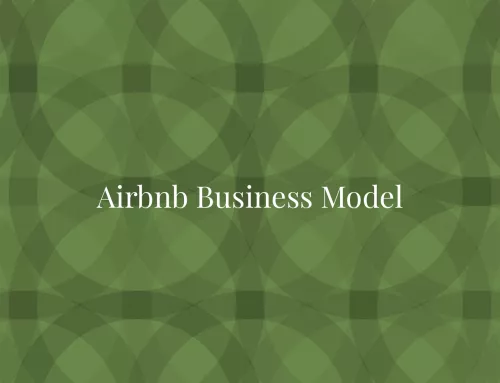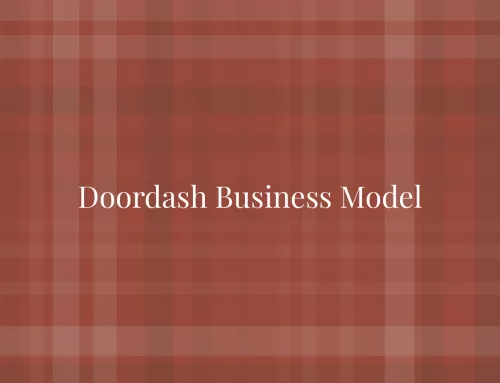Product Management Challenges
The challenges are applicable, not only to product managers, but also those developing services or other offerings.A Product Manager collaborates with customer, technology & business to launch a product in the market that brings business value. Most Product Managers are currently challenged to:
- Build a better and innovative product
- Deliver the product faster than the competitor
- Manage the product in a structured, methodical and repeatable way
- Keep the various teams project on time and on budget
- Ensure business value in a dynamic environment
- Deliver new features and functionalities
Minimum Viable Product (MVP)
n MVP, an acronym from a Minimal Viable Product refers to a simplified version of the product. Its functionality and interface are enough to fulfill the main need and capture audience interests. Additional features like customization, personalization, small extra benefits are not included in MVP.
MVP is a stripped-down version of a product with functional features and interface, enough to test the idea. Even in the worst-case scenario, the business will have enough funds and will be able to explore the pivoting options.
The purpose of a minimal viable product is to provide users with a way to explore the product and understand its main intent. An MVP should be appealing to the audience, which means having a well-tested look and feel. However, the functionality and interface are still quite simple. An MVP helps:
- Identify risks at an early stage at a relatively low cost
- Avoid serious functional problems in the future
- Analyze actual user behavior and preferences, rather than make assumptions
- Increase customer loyalty
- Predict demand
- Optimize product development and marketing process
- Understand how to monetize a product based on actual user needs (for example, via Discovery-driven planning[1])
An MVP will show you if your idea works. It is a good way to justify market demand for a product and then get support from investors or partners.
Keep in mind, before you create a product, you need to find out who needs it, what challenges it must meet, and how it will help you earn money. An MVP using will provide you with the answers to these questions.
Case – Facebook
Facebook started out as a directory of Harvard students, where users could manage their networks, profiles, and communicate with classmates. The name of the product shows its origins — at Harvard, student directory books were called facebooks. The site was introduced to a limited target audience – Harvard students. After the website became successful, Zuckerberg started offering memberships in other Ivy League universities, including Yale, Stanford, and others.
Up till 2005, Thefacebook was a network for students, but it expanded beyond Ivy League, and even beyond the U.S. Thefacebook was eventually renamed to Facebook and released as a public network.
Case – Twitter
Twitter’s MVP, released under the name of Twttr, was beta-tested to a limited number of users before a public release. The tool technically became public in 2006 but got successful after the Southwest interactive conference a year after. Suddenly, the number of tweets increased by 3 times. Since that event, the platform gained popularity.
The MVP version allowed the team to run beta-testing, check the demand for the concept, and improve the product. That way, when a tool was presented at the conference, it was fully ready for widespread adoption.
Minimum Lovable Product (MLP)
MLP is a minimum loveable product. It’s a level above MVP — the product has to be no longer just viable, but also loveable. This means, the functionality has to do more than solve problems — it also has to offer great user experience and impress users on an emotional level. It includes an appealing look and well-thought value that delights the customers.
The priority of an MLP is to win the empathy of the future audience. The minimum loveable product definition was offered by Brian Haaff in 2013. He defined it as a reduced version of a new product that clients will love from the start.
In his book Lovability, the author states that bringing happiness to customers helps businesses grow in the long run.
Case – Amazon
Amazonians always drive towards MLP (Minimum Lovable Product) vs MVP. This partially reflects the company’s customer obsession; it is not merely enough to make something viable, you must delight and surprise the customer. This is where vision matters. For me, the difference between the two approaches is that with an MVP you are constantly looking to see what you can remove in order to make the product more viable and with an MLP you are constantly looking what to add to make the product lovable.
Amazonians always drive towards MLP (Minimum Lovable Product) vs MVP. This partially reflects the company’s customer obsession; it is not merely enough to make something viable, you must delight and surprise the customer.
Jeff Wilke recognized that Amazon’s MVPs failed to insist on high standards. Teams were making trade-offs to prioritize speed over customer delight. A minimum loveable product (MLP) is a term used at Amazon to describe a version of a product with just enough features for early customers to love the experience.
It may be that some customers are ok with MVP, but customers don’t want MVP. It has to be lovable or they’re not going to adopt it. We had to change the standard for how we were thinking about press releases and products. We were sliding toward a standard that was too low. (Jeff Wilke)
When Amazon was developing the first Kindle, Jeff Bezos insisted that it have cellular connectivity despite all other precursor devices like mp3 players had an accepted pattern of connecting to a PC to download content.
An MVP would have meant no wireless. In fact, wireless was so hard at the time that it was putting the entire Kindle program at a significant risk. Some may have also called this move unnecessary given that Kindle’s main role was to ensure that Amazon still makes money on books when more and more purchases were shifting to digital content.
They didn’t settle on just a wireless connection, they wanted customers to be able to access and buy books anywhere. That is true customer obsession – the complete opposite of hypothesis testing-driven development. Why should the customer care to respond to all your experiments and a lack of strong vision for what product would best solve their problem ? A company’s job is to innovate on behalf of its customers and not burden them with the task of choosing between its half-baked ideas. Of course, Amazon has had it’s fair share of failures, (Fire Phone being its most public shame) but I would take a big, noisy flop any day over death by a thousand cuts which is common with projects that follow the “lean” methodology.
Minimum Marketable Product (MMP)
In parallel with MLP vs MVP comparison, it’s worth also mentioning MMP (or minimum marketable product). Actually, a minimum marketable product is a version of your MVP (or MLP product) which you are going to push to the market. A minimum marketable product is the minimum version of the product that is ready for the market. Following the concept of minimalism, it offers the most important set of features that are required to make it a great market fit.
TechTarget defines MMF as:
the smallest set of functionality in a product that must be provided for a customer to recognize any value. The concept supports the belief that software released to the customer should provide some added benefit, no matter how frequent the releases are.
The goal of MMF is to deliver value to customers by focusing on the features with the highest value, launching products faster and reducing the time to market. This will, in turn, increase the organization’s return on investment (ROI).
MVP, MLP and MMP compared
| MVP | MMP | MLP |
|---|---|---|
| e fastest among others to develop | Fast to develop | Slower to develop than an MVP |
| Minimum features to gain users’ following | Minimum features to promote a product at the market | Minimum features to gain users’ following |
| There is no emphasis on UX & UI design | Not necessarily focused on UX & UI design | Focus on lovable UI & enjoyable UX |
| Effective to use if there are only one or few rivals | Effective to use in a different competition environment | Effective to use if there are many alternative options on the market |
DFV framework
All components, such as value proposition, cost, financial model, etc. should align with customer expectations for a product or service offering to succeed. Hence, product managers often test their products, for example through Voice of the Customer (VoC) surveys, to sense customer preferences, adapt product / service roadmap and understand how these different components work together.
According to Joe Gerber, Co-Managing Director of IDEO CoLab, three crticial dimensions guide what product / service managers should test:
- Desirability
- Feasibility, and
- Viability
In the blog article titled, How to Prototype a New Business, Joe Gerber presents the following case:
For example, PillPack — a full-service online pharmacy that delivers your daily prescriptions in easy-to-use packages—wanted to test pricing and value propositions. They branded a kiosk in a mall where the CEO talked with potential customers. While online prototypes can be great, this instance of live prototyping allowed the team to learn directly from prospective customers, have conversations, ask follow-up questions, and get real-time feedback about the business. We call this a “lemonade stand” prototype.
Lemonade stand prototypes are a great way to get direct customer feedback about your business and answer questions around your value proposition assumptions.
Desirability
Desirability tests whether your innovation is solving the right customer problemThis dimension helps to know your customer and what they really want[2]. This is the most important dimension that defines value proposition of product from customer perspective. This variable answers most important questions, such as:
- Do people want this product or service?
- Does it make sense for them?
- Will this solution fill a need?
- Will my customer actually desire my product I am visioning?
- What’s the unique value proposition?
A good product manager should start from desirability dimension and then translate it through other two dimensions. The objective is to create a desirable product or service with great appeal factor. A good strategy is to have a focused testable group to understand what is really important. When a Product Manager has comprehensive understanding of what, it just then the implementation of a concrete SMART plan.
It doesn’t matter feasibility or viability, if we don’t create desirability. We achieve happy convergence of successful design, the sweet spot, by starting with desirability and then translating it through these other two dimensions, coming next in your read below.
Feasibility
Feasibility tests whether your innovation strengthens your businessThis dimension focuses on the architecture and underlying technologies and helps understand whether product development is achievable[3]. In other words, this dimension helps understand:
- Can we build this product?
- Is this functionally foreseeable in the future?
- Can we do this successfully?
A feasible product aligned with business core technical & operational capability is a winning approach. A tweaked version of Pareto rule can be applied here:
If envisaged new product can leverage ~80% of current capabilities, and team can confidently work on rest ~20% of needed capability, we have a winner
Viability
Viability tests your value chain for long-term sustainabilityThis dimension defines value proposition of product from business perspective. This dimension addresses the Business and Financial Models and helps understand:
- Should we do this?
- Is the product economically justifiable?
- Are the returns worthy of investment?
- Are the products / services aligned with the business strategy?
- Is this product aligned with our partners growth strategy?
Viability not only looks at profit, but also at sustainable economic growth for organisation.




